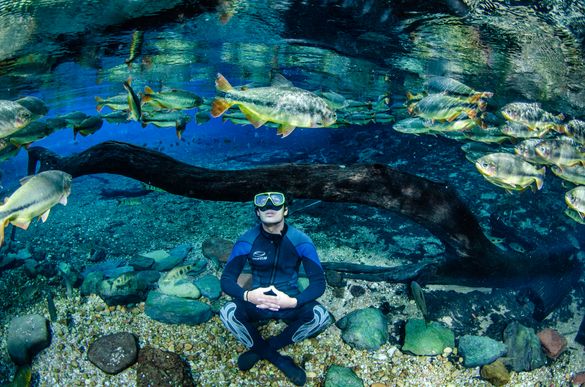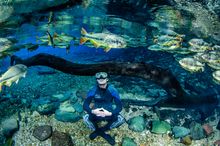 23 Jul 2025
23 Jul 2025
Tags: #VisitMS, #matogrossodosul, #pantanal, #Bonito, #innovation, #technology, #brazil, #ecotourism

Technology and ecotourism might seem like an unlikely combination, but the state of Mato Grosso do Sul proves that the two can indeed work hand in hand to create positive impact—for both visitors and the environment. In the state's two main tourist destinations, Bonito and the Pantanal, innovative initiatives are setting the standard.
Bonito Digital: A Brazilian Case Study in High-Tech Sustainable Tourism
Bonito, a town renowned for its crystal-clear waters, caves, and lush greenery, has also become a model for technology applied to tourism. That's thanks to its entirely digitized tour operations, coordinated through a Digital Voucher system issued exclusively by accredited local agencies.
The system is straightforward: after booking and paying for a tour, visitors receive a digital voucher containing a QR code and detailed information about the activity, such as the time, group size, and tour guide. This document is mandatory for accessing attractions, enabling real-time visitor flow control. To ensure environmental preservation, the number of spots per activity is limited and closely monitored. The Digital Voucher ensures controlled visitor numbers, environmental conservation, and high-quality tourist experiences. With all activities scheduled in advance, visitors avoid overcrowding, queues, and last-minute surprises.
In Bonito, attraction prices are fixed, with costs varying based on the attraction, the visitor's age, and whether it's high or low season. Cancellations must be requested at least 24 hours in advance and are assessed case by case.
Pantanal: Innovation in Conservation
In the Pantanal region of Mato Grosso do Sul, technological innovation goes beyond the tourist experience—it plays a vital role in preserving one of the world's most important ecosystems.
The state has implemented technologies like smart sensors for early fire detection, real-time wildlife monitoring, self-guided trails with QR codes, and interactive panels in lodges—all designed to merge conservation, education, and high-quality ecotourism.
One notable example is the use of geolocation and advanced technology in fire prevention efforts under Operation Pantanal 2025. The state government has reactivated the Integrated Command and Control Center (CICC) and expanded use of the Incident Command System (SCI), a platform for planning and monitoring field actions. This technology enables coordinated responses from the Fire Department, Civil Defense, and Public Security to ensure quicker reactions to forest fires and more effective protection of the biome.
Want to discover more about what Mato Grosso do Sul has to offer?
Visit the destination's website and Instagram for more information.
Written by Natália Manczyk – Porta de Embarque

